In-text Citation
Paraphrasing and Quoting
In-text citations indicate when you have paraphrased or quoted information from another source. You must include the author and year of the publication, for example (Smith, 2020, p. 37). This allows the reader to identify the full reference in the reference list.
Paraphrasing
Paraphrasing should be used in most cases. It allows you to maintain your voice and smoothly combine various pieces of information to develop your points.
Paraphrase with a narrative in-text citation:
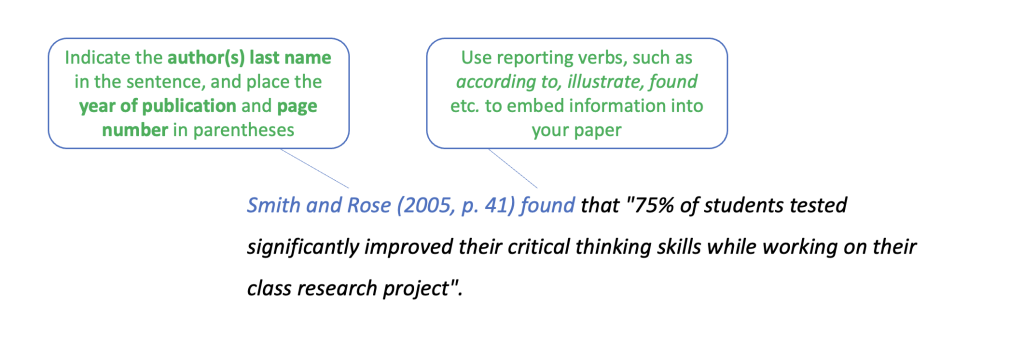
Paraphrase with a parenthetical in-text citation:

Note: FHNW’s School of Business requires that you always provide page numbers when paraphrasing despite APA implying that when paraphrasing or summarizing an aspect of the text that extends throughout the original page numbers are not necessary.
Quoting
Direct quotations should be used in selected cases to add precision. However, they can often be an interruption to your structure and style and therefore should be used with caution.
Example: Quotation with narrative in-text citation
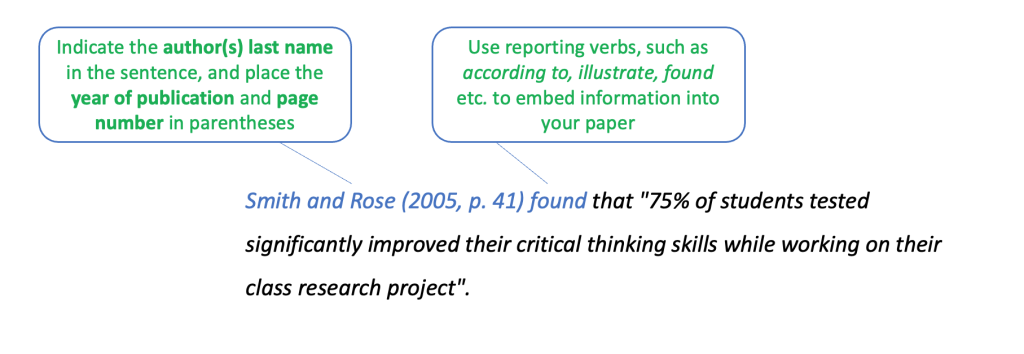
Example: Quotation with parenthetical in-text citation
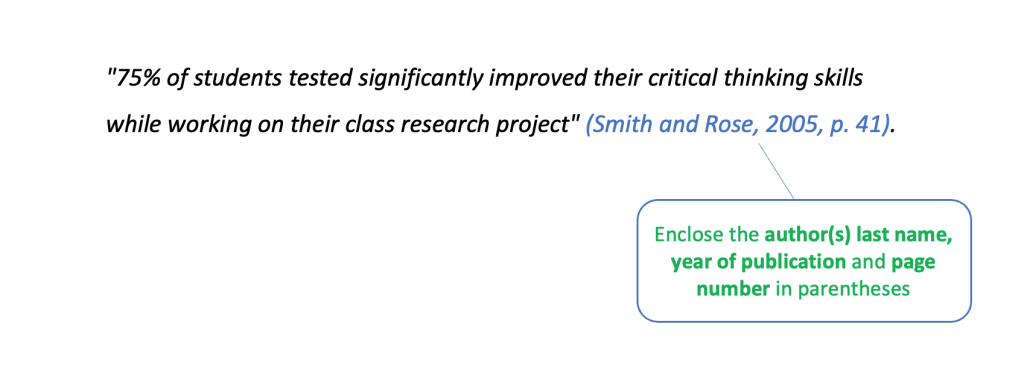
Integrating quotations into your paper
When integrating quotations into your paper, consider the following:
- Include page numbers in the intext citation;
- Maintain and indicate them by adding [sic] e.g., “Swizerland [sic] is a beautiful country.”;
- Indicate any changes you make to smoothly integrate the quotation into your text with square brackets, e.g., “(…) to indicate who she [the HR manager] is.”;
- Format quotations longer than 40 words as block quotations. APA provides clear examples of block quotation here apastyle.apa.org.
How often and where should you place in-text citations?
Whether paraphrasing or quoting, it is highly important that the source of the information is clear when the information is first introduced, e.g., According to Smith (2005), sed do eiusmod tempor incididunt ut labore et dolore magna aliqua. Simply indicting the citation at the end of a paragraph is insufficient, as the reader cannot decern what information in the paragraph is your own contribution and what is from the source mentioned at the end of the paragraph.
Good Example: Integrating information from a single author
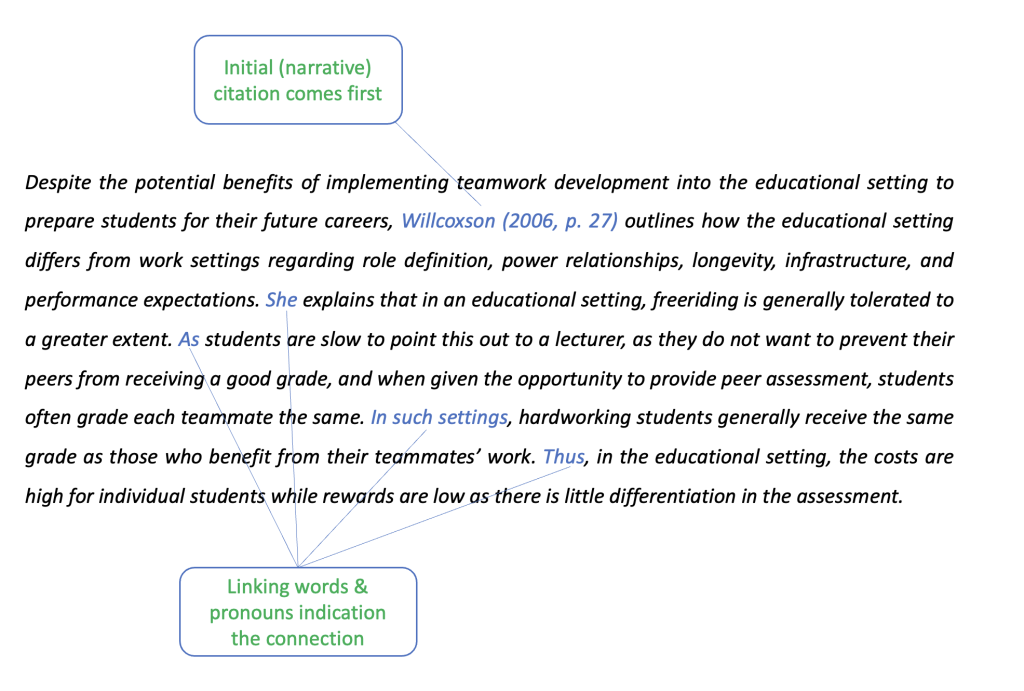
Poor Example: Integrating information from a single author
In this example, the author is indicated at the end of the paragraph. There is no indication of when the information from Willcoxson (2006) starts. This lack of transparency inadequately credits Willcoxson for her work and makes it difficult for further researchers and practitioners to build on this work.
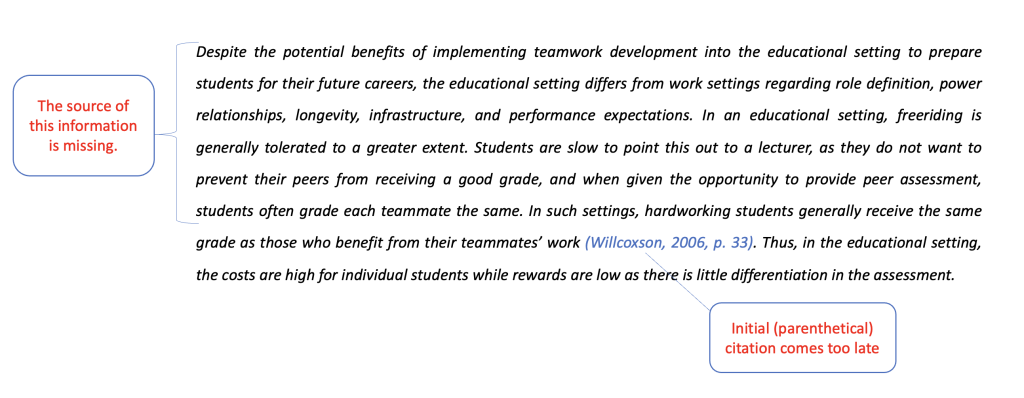
Good Example: Integrating information from multiple sources
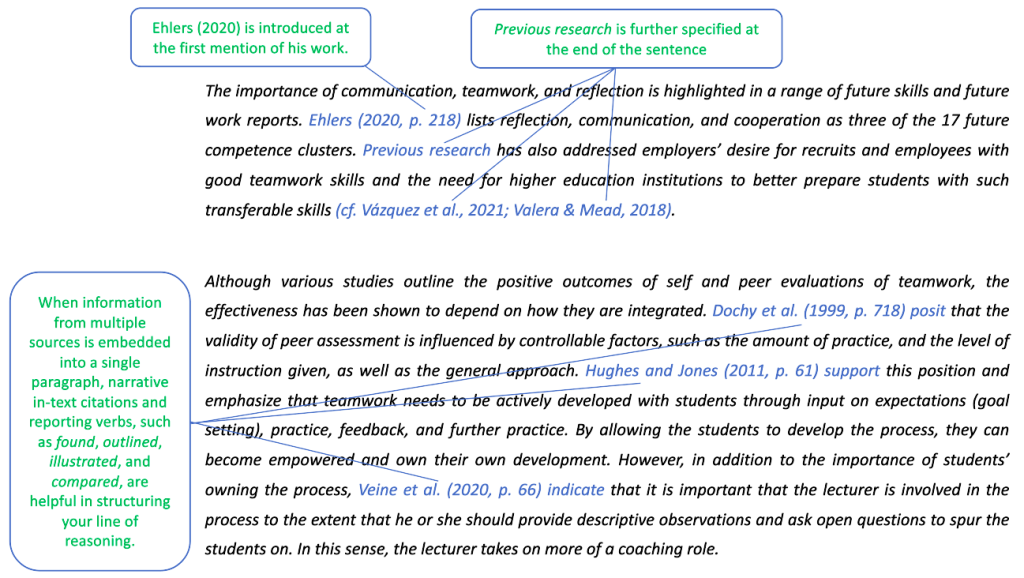
Information on paraphrasing according to APAstyle.apa.org
Citing secondary sources
When you do not have access to the original source that you would like to cite use as cited in to indicate both the original (e.g., your secondary source, which you did not read) and the primary source (e.g., the source you read).
- (Smith, 2015, p. 35, as cited in Johnson, 2020, p. 78)
This form of citation is a last resort. If used too frequently, the credibility of your research will be questioned.
Citing secondary sources according to APAstyle.apa.org
Citing personal communication
Personal communication, for example, communication with a lecturer or expert in the field, should be indicated as follows:
- Narrative citation: According to Smith … (personal communication, July 26, 2021) …
- Parenthetical citation: … (Smith, personal communication, July 26, 2021) …
Quoting your research participants, i.e. interviewees
What if…?
- If no author is indicated, as is often the case with reports published by a company or organization, use the name of the company or organization (e.g. World Economic Forum, 2017).
- If no date is given, use n.d. for no date.